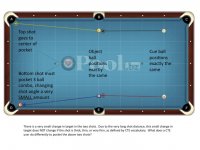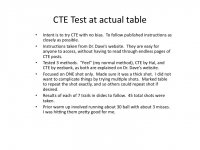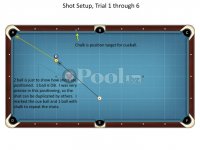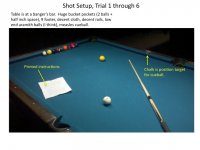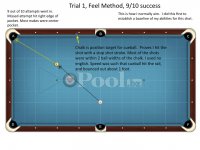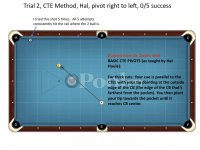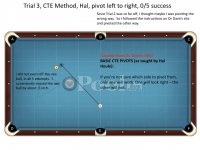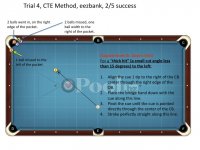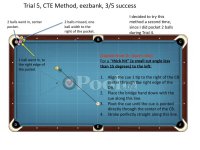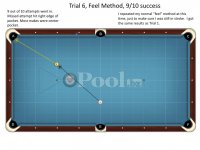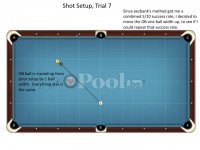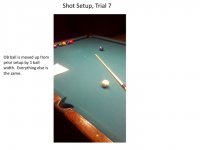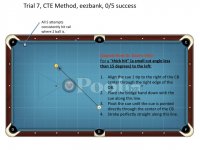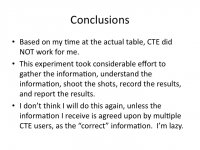Pool101,
Just to clarify your video, you are NOT a CTE user, or you are? I thought you did a much better job then Spiderweb covering the table, yet even from what was left visible, you could still find the pocket without any problem. I'm a feel player, and think that I can duplicate your results and spiders, if I covered the tables in the exact same way. I think our brains are so used to what the table looks like, that we have no problem finding the pocket with just some of the rails visible.
I've played on a 9 foot table all my life. Just recently, I was on an 8 footer, and every time I went to spot the cue ball to break, it was way past the headstring. My brain was so used to moving my arm an exact amount, that I didn't even know I was well past the line until someone said something.
Just to clarify your video, you are NOT a CTE user, or you are? I thought you did a much better job then Spiderweb covering the table, yet even from what was left visible, you could still find the pocket without any problem. I'm a feel player, and think that I can duplicate your results and spiders, if I covered the tables in the exact same way. I think our brains are so used to what the table looks like, that we have no problem finding the pocket with just some of the rails visible.
I've played on a 9 foot table all my life. Just recently, I was on an 8 footer, and every time I went to spot the cue ball to break, it was way past the headstring. My brain was so used to moving my arm an exact amount, that I didn't even know I was well past the line until someone said something.
